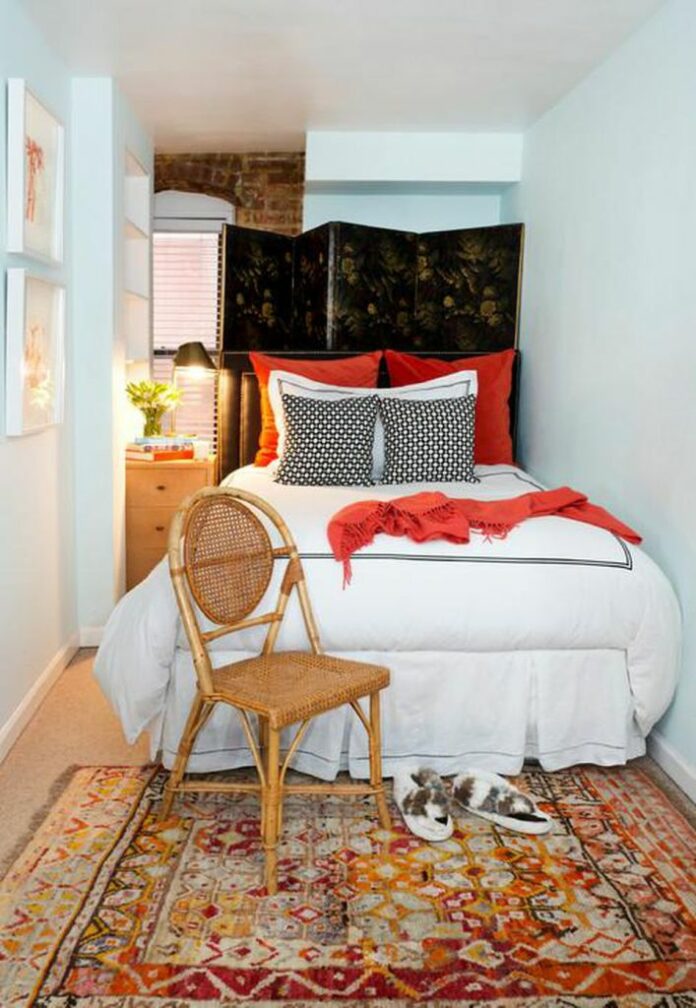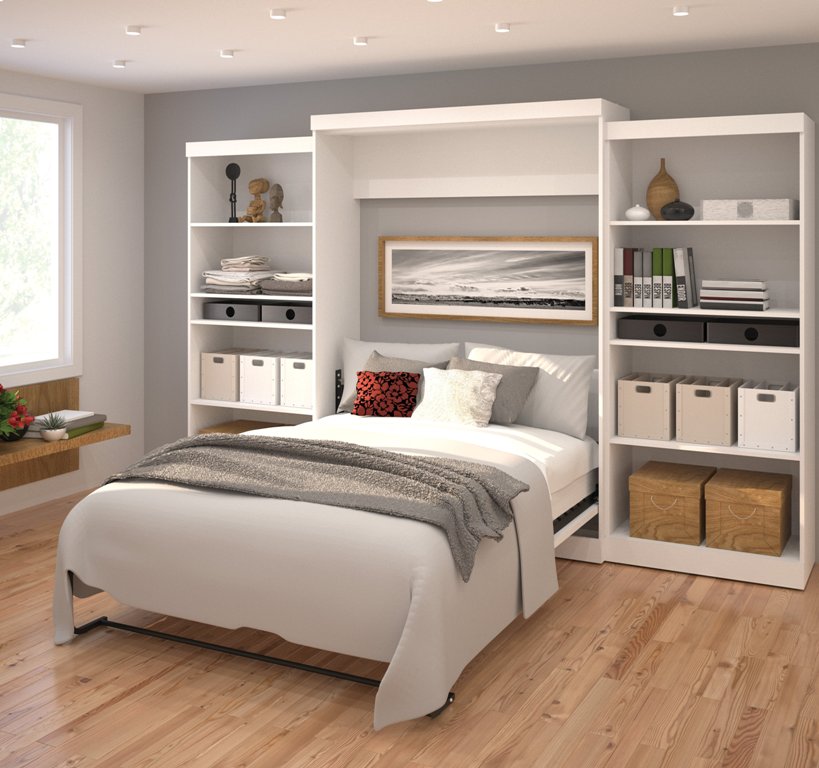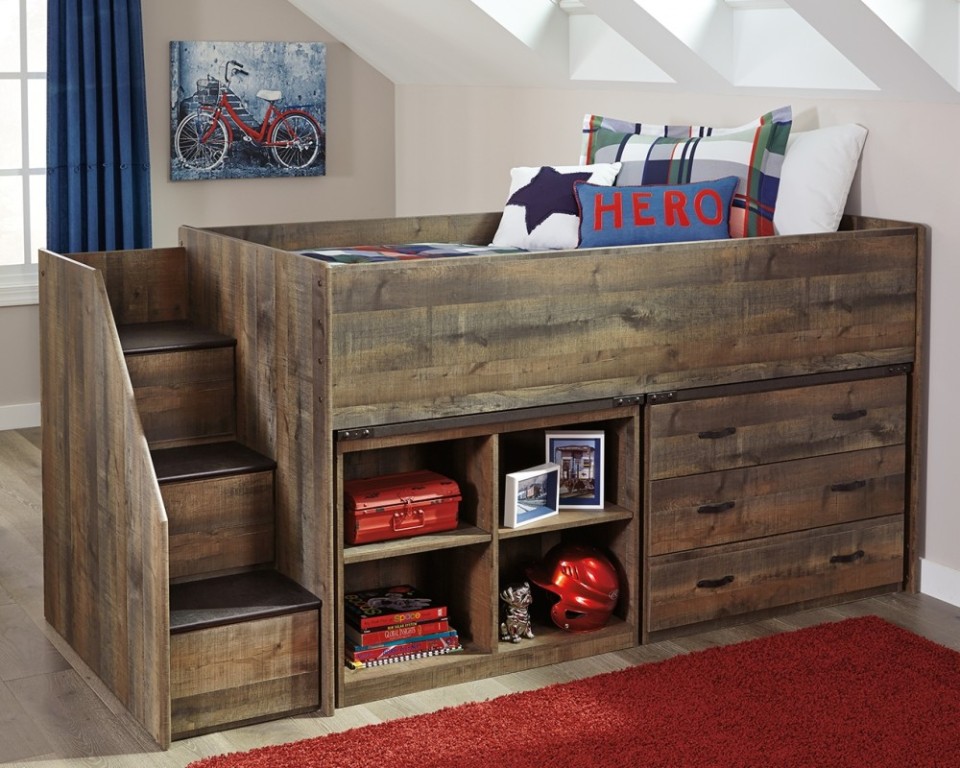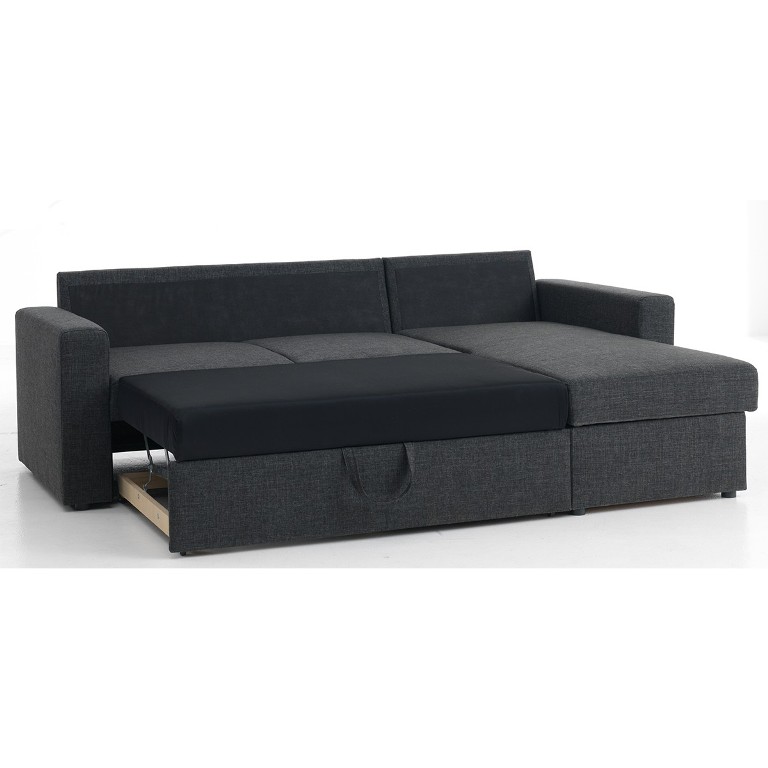The smallest bedrooms in our homes are often the ones that go to our children or that are turned into a guest room or into an office.
Figuring out what style bed to put in a small bedroom can be frustrating. Beds are often the largest piece of furniture in a room and the rest of the furniture gets planned around it. But too large of a bed in a small room means that you won’t have room for other furniture or to walk around.
If you’re trying to plan out how to layout a small bedroom but aren’t sure what type of bed would work best, consider some of the following choices.
Murphy bed
Murphy beds pull down from the wall, making them an excellent choice for when you want to maximize the floor space in a room. They come in a variety of sizes and styles.
The most basic Murphy beds usually just look like a wooden cabinet when folded up. More elaborate Murphy beds might look like a shelving unit.
Murphy beds are typically best for guest bedrooms or extremely small rooms where you have no other choice. The spring mechanisms behind a Murphy bed will wear out in 5-8 years if used daily, so if you’re planning on it as your primary way of making a room functional, be prepared to make frequent repairs.
Bunk beds
Bunk beds are a favorite of families that are trying to get multiple kids into a small bedroom. They allow you to stack beds, which means you will have more floor space to use for other purposes. Typically, you’ll find them as a twin or full-size bed.
These days, there are so many different styles of bunk beds. There are bunk beds that go flat against the wall, bunk beds that are L-shaped, bunk beds with wider steps, bunk beds with under bed storage, and more.
Bunk beds really work best for children and teens, but there are bunk beds that will support young adults and adults.
Loft beds
Loft beds are similar to bunk beds, except there is no lower bunk. This empty space can then be used for various purposes, such as a play area or as an area for a desk. Typically you’ll find them as a twin or full-size bed.
They should only be used when your child is old enough to safely go up the steps and when they understand that the bed part is only for sleeping or lounging on.
Ikea is known for its loft beds, but if you don’t have one in your area, don’t be discouraged. Architecture Lab has put together a list of the best Ikea alternatives when it comes to furniture; check out the website here.
Trundle bed
If your tiny bedroom is primarily only going to be used to sleep one person, but you have frequent overnight visitors that will need a place to sleep, a trundle bed could be a good option.
Trundle beds simply slip out from under your main bed, providing an extra sleeping space. Most of the time, you’ll find these in twin size, but it is also possible to find them in a larger size.
Trundle beds give you a two-for-one bed, even when you have limited space. Some trundle beds even have under bed storage that can be used as a dresser. You can also find options that have storage headboards for books and small decorations.
Sofa bed
Sofa beds aren’t known for being the most comfortable beds, nor are they particularly easy to fold-out, but these are a good option for if you have a spare bedroom that is functioning as both an office and a guest room.
If you’re using the space as an office and don’t constantly want to be losing valuable floor space for a bed, the bed gets folded away when not in use and you still have a sofa to sit on.
The easiest way to make a sofa bed more comfortable is by purchasing a mattress topper to go on top. You probably don’t want to sleep on a sofa bed all the time, but they make perfectly fine guest beds.
Concluding thoughts
If you’re smart about what type of bed you put in your tiny bedroom, you’ll still have plenty of floor space for other purposes. Consider the primary purpose of the bedroom before you purchase the bed. You’re going to want to purchase a different type of bed for your child than you would for a guest.





















